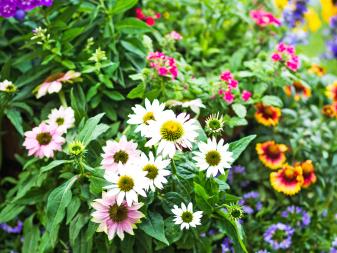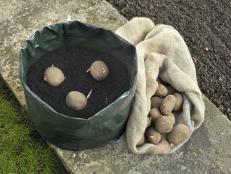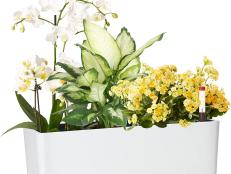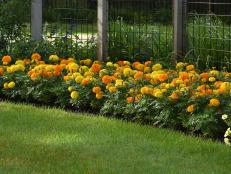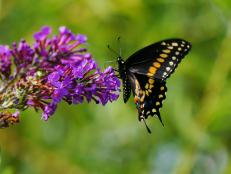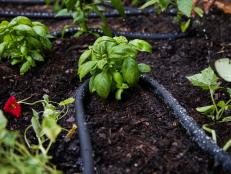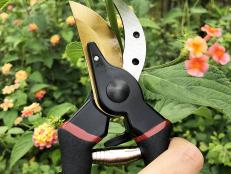How to Design a Container Garden
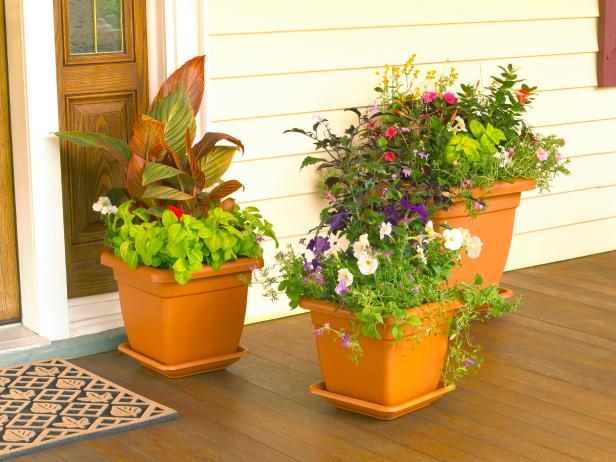
Gardening with containers allows you the opportunity to experiment with color combinations and plant choices before committing to those plants in the garden. There are many ways to plant containers, and that can be quite intimidating, especially for beginners.
Combine Various Plants
The easiest way to begin is to combine these categories of plants: thriller, filler and spiller.
"You want to have a bold, upright, architectural plant; that's the thriller," says garden designer Steve Silk. "It really gets your attention."
50 Can't-Miss Container Gardening Ideas 50 Photos
Get our tips for container garden planning and planting success — plus easy DIY planters you can craft yourself.
The filler is the plant with medium height in the pot, or the next step down from the thriller. The spiller tumbles out of the edge of the container and falls toward the ground.
When considering plants to use as your thrillers, fillers and spillers, think about their texture, fragrance and color combinations. Individually, each plant conveys color, texture, shape, and dazzle. Yet when combined in one container or a grouping of pots, examine how the plants interact with each other. Do certain colors in one plant bring out subtle complementary colors in another? How do the various leaf shapes, sizes and textures carry through the container plantings? Is there an underlying theme that connects all the plants together?
Choose a Thriller
So how do you combine form and function into a fabulous container? Start with your focal point, or thriller. This is the plant that provides architectural structure in the pot. "Thrillers are the big, bold element, so look for shapes that are strong and pronounced," says Steve. Good options for thrillers are bananas, elephant ears, cannas and ornamental grasses.
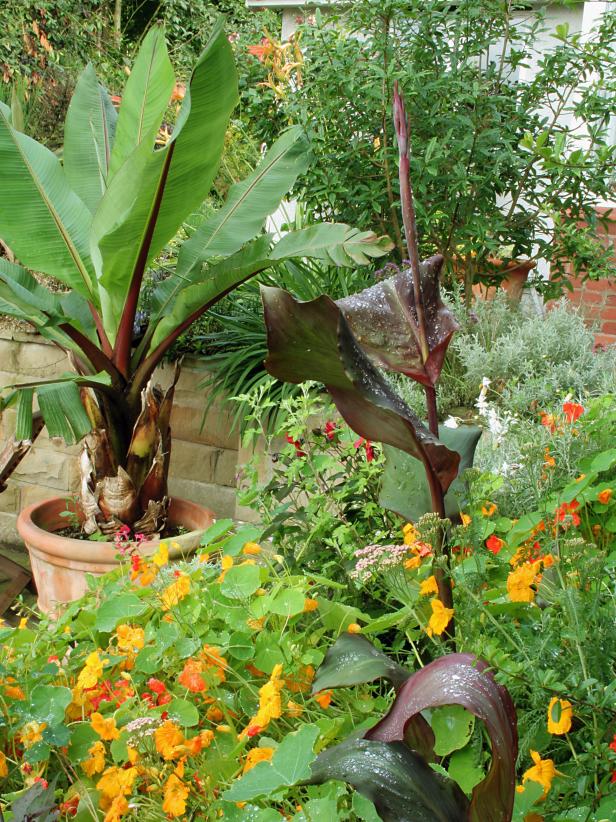
Choose a Filler
Fillers are the plants in the middle that connect the thrillers to the spillers. "Fillers are mounding, billowy plants that I like to put around the thriller. They disguise the base of the thriller and fill up the pot with neat shapes," says Steve. Consider using plants of moderate size, such as coleus, pentas and lantana.
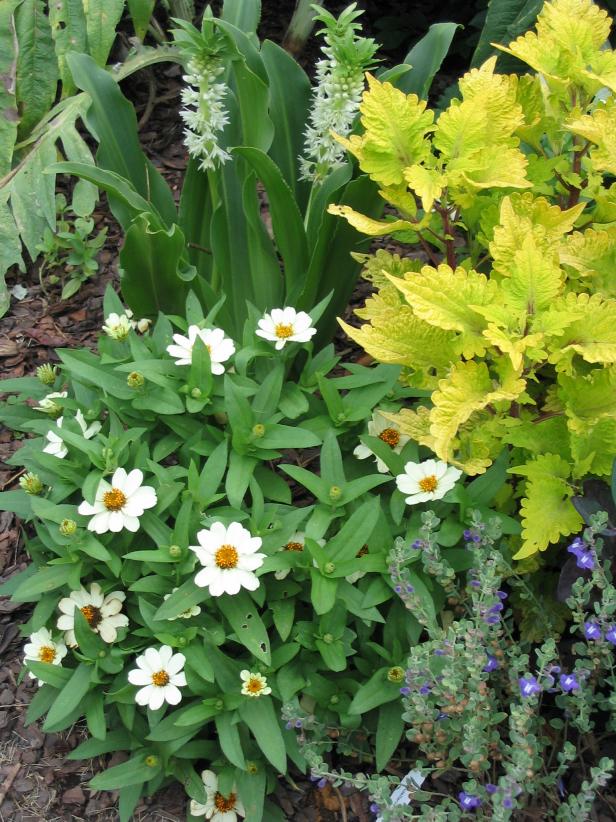
Image courtesy of Susan Morgan
Choose a Spiller
Spillers are the final element to consider when designing your pots. They cascade to the ground, softening the edges of the pot and anchoring it in place. They provide a colorful skirt around the combination of thrillers and fillers. Sweet potato vine, million bells (Calibrachoa) and verbena are good examples of trailing plants.
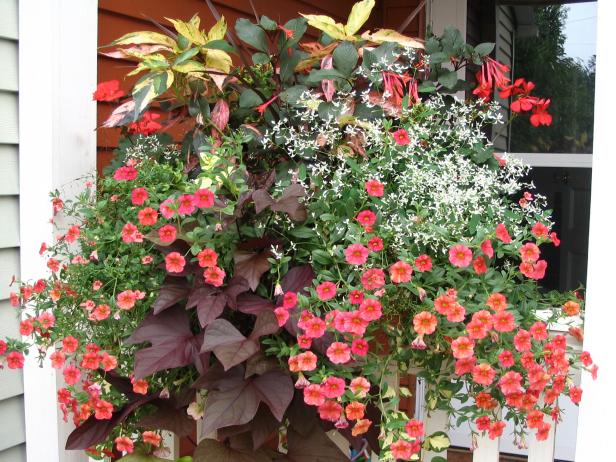
Design by Rate My Space user kmphelps
Select a Container
Before selecting a container, think about where you want to put it in the landscape. Will it soften the corner of a patio? Do you want to place it within a grouping of containers? These are important options to consider when choosing a pot and will help to determine if you need small eight-inch pots or big four-foot containers. You should also consider color combinations, formal vs. informal, style, access to a water source, general care and maintenance, and plans for winter care.
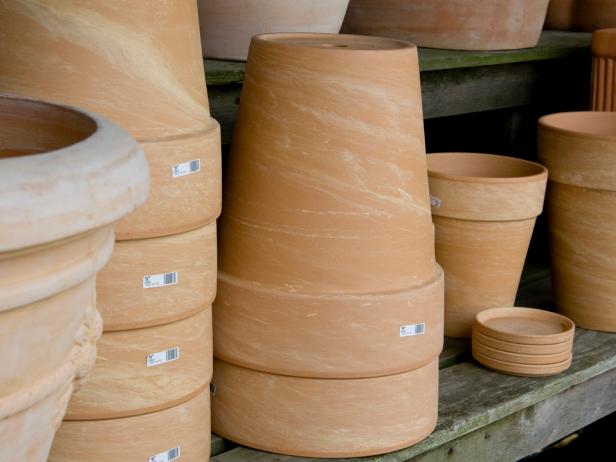
Plant Your Container
Good soil is vital in containers. Steve recommends using a mixture of one part high-quality potting soil, one part compost and one part shredded pine bark.
Once the soil is in place, start planting the container. You can assemble the container in any way you see fit, but it's helpful to plant the biggest plant, the thriller, first so you don't have to make room for it later. Then add the fillers around the base of the thriller, followed by the spillers trailing over the edge of the pots.
As you arrange the plants in the pot, symmetry isn't essential, but picking up color echoes to tie the plants together is always nice. The thrillers, fillers and spillers concept works the same for small and large pots as well as pots clustered together in groupings.
Water the pots as needed and feed with a liquid or slow-release fertilizer every two to three weeks.






